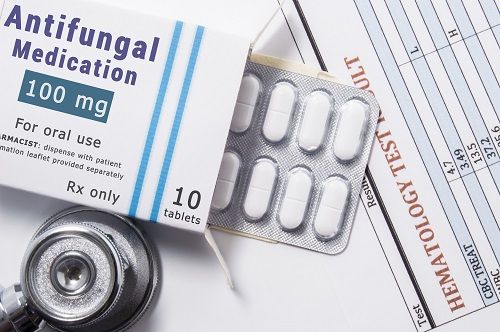Invasive Fungal Infections in Critically Ill COVID-19 Patients
Antifungal therapy was frequently initiated before essential diagnostic elements confirmed invasive fungal infections in critically ill COVID-19 patients.

COVID-19 patients exposed to prolonged ventilation and broad-spectrum antibiotics can experience the destruction of respiratory flora and even fungus growth in respiratory specimens.
Distinguishing between colonization and invasive fungal coinfection is challenging, particularly in patients receiving corticosteroid or immunomodulatory therapy. The COVID-19 pandemic has created obstacles in conducting diagnostic tests, resulting in delays or inability to diagnose fungal infections. Therefore, one study aimed to describe the diagnostic workup and treatment of invasive fungal infections in COVID-19 patients.
The retrospective cross-sectional study was accepted as an abstract at this week’s 25th Annual MAD-ID Antimicrobial Stewardship Meeting, where it was presented by author Jayna Sharma, PharmD.
The analysis included patients admitted to the intensive care unit with COVID-19 who received a systemic mold-active antifungal between April 1, 2020-April 1, 2022. Patients who were on home antifungal medications, receiving systemic antifungal for prophylaxis, or undergoing treatment for invasive non-pulmonary candidemia were excluded.
The study's primary endpoint was completion of a diagnostic bundle, which included computed tomography (CT) chest imaging, pursuit of sterile site pulmonary specimen obtainment with fungal testing, and application of proven or probable invasive pulmonary aspergillosis criteria before initiating antifungal therapy. Secondary endpoints included mortality, infectious diseases consultation frequency, and duration of therapy.
A total of 55 patients were included in the study, averaging 64 years of age, 72% male, and 92% white. The most common comorbidities were diabetes (25.6%) and chronic obstructive pulmonary disease (13.6%). The diagnostic bundle was completed for 22 patients (40%). Mortality was high at 76%, and infectious diseases were consulted for 29 patients (52.7%). Aspergillus culture was positive for 13 patients (23.6%). Posaconazole was the most commonly used antifungal in 47 (85.5%) cases, with a median therapy duration of 4 days.
This study found that antifungal therapy was frequently initiated before essential diagnostic elements confirmed invasive fungal infections in critically ill COVID-19 patients. It is vital to confirm invasive fungal infections before initiating antifungals and antibiotics, to promote antimicrobial stewardship and prevent dangerous pathogens from developing resistance.
This study, “Antifungal Usage in Critically Ill COVID-19 Patients,” was presented as an abstract at the 2023 MAD-ID Annual Antimicrobial Stewardship Meeting.
